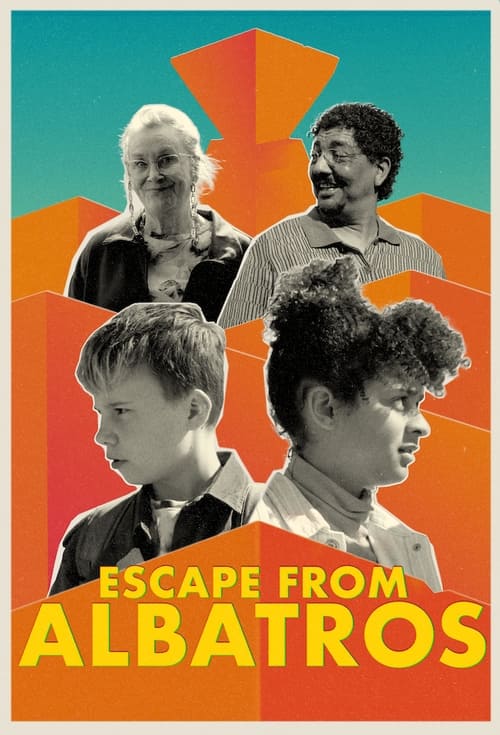
Ask Your Own Question
What is the plot?
In the opening scene of "Episode 99," Lisa is seen sitting at her kitchen table, staring blankly at a stack of bills. The camera zooms in on her furrowed brow, revealing her growing anxiety about her financial situation. She picks up her phone and scrolls through her contacts, hesitating before finally dialing her friend Sarah. The conversation reveals that Lisa is struggling to make ends meet and is considering taking on a second job. Sarah encourages her to stay positive and offers to help her brainstorm ideas.
The scene shifts to Lisa at her workplace, a small local café. She is behind the counter, serving customers with a forced smile. Her boss, Mr. Thompson, approaches her and mentions that they are short-staffed for the weekend. He asks if she can work extra shifts, which adds to her stress. Lisa reluctantly agrees, knowing she needs the money but feeling overwhelmed by the prospect of more work.
Later that evening, Lisa meets with Sarah at a nearby bar. They sit at a dimly lit table, and Lisa expresses her frustration about her financial struggles. Sarah suggests that Lisa should consider selling some of her artwork online, as she is a talented painter. Lisa is hesitant, doubting the value of her work, but Sarah insists that it could be a good way to earn extra income. The conversation becomes emotional as Lisa reveals her fear of failure and her desire to pursue her passion for art.
The next day, Lisa decides to take Sarah's advice and sets up an online shop for her artwork. She spends hours photographing her paintings and writing descriptions. As she uploads her work, a sense of hope begins to replace her anxiety. However, her excitement is short-lived when she receives a notification that her first sale has been canceled due to a payment issue. Frustrated, Lisa feels disheartened but resolves to keep trying.
In a pivotal scene, Lisa attends a local art fair where she showcases her paintings. She is nervous but determined to make a good impression. As she interacts with potential buyers, she receives mixed feedback. Some people admire her work, while others dismiss it. Lisa's confidence wavers, but she pushes through, engaging with a particularly interested couple who express genuine appreciation for her art. They encourage her to keep creating, which reignites her passion.
Later that night, Lisa receives a call from Mr. Thompson, who informs her that the café is facing financial difficulties and may need to cut staff. This news hits Lisa hard, as she fears losing her job. She spends the night tossing and turning, contemplating her future and the possibility of pursuing art full-time.
The following day, Lisa makes a bold decision. She quits her job at the café, believing that she needs to fully commit to her art. This moment is filled with a mix of fear and exhilaration as she walks out of the café for the last time. She feels a weight lifted off her shoulders, but uncertainty looms over her.
In the final scenes, Lisa dedicates herself to her art, spending long hours painting and promoting her work online. Slowly, she begins to gain traction, receiving positive feedback and even a few sales. The episode closes with Lisa standing in front of her easel, a look of determination on her face as she paints, symbolizing her commitment to her dreams despite the challenges ahead.
What is the ending?
In the ending of "Lisa," season 1, episode 99, Lisa confronts her past and makes a pivotal decision about her future. The episode culminates in a tense confrontation with her estranged father, leading to a moment of emotional catharsis. Lisa ultimately chooses to embrace her independence, leaving behind the toxic relationships that have held her back. The episode closes with her stepping into a new chapter of her life, symbolizing hope and resilience.
As the episode unfolds, the scene opens in a dimly lit room where Lisa sits alone, her face illuminated by the soft glow of her phone. She scrolls through old messages, her expression a mix of nostalgia and pain. The weight of her past hangs heavily on her shoulders, and the audience can feel her internal struggle as she grapples with the decision to reach out to her father after years of silence.
The scene shifts to a flashback, where we see a younger Lisa arguing with her father. The tension is palpable, and the emotional scars from their tumultuous relationship are evident. Lisa's father, a stern figure, raises his voice, and Lisa's youthful defiance is met with disappointment. This moment serves as a stark reminder of the unresolved issues that have shaped Lisa's identity.
Returning to the present, Lisa takes a deep breath and finally decides to call her father. The phone rings, and her heart races as she waits for him to pick up. When he answers, the conversation is fraught with tension. Lisa's voice trembles as she confronts him about the pain he caused her. Her father, initially defensive, begins to soften as he realizes the impact of his actions. The emotional exchange is raw, filled with moments of silence that speak volumes.
As the confrontation reaches its peak, Lisa's father apologizes, and for the first time, Lisa sees a glimmer of vulnerability in him. This moment of connection is pivotal for Lisa, who has longed for acknowledgment of her suffering. Tears well in her eyes as she processes the complexity of forgiveness. However, she ultimately decides that reconciliation does not mean she must remain in his life.
In the final scenes, Lisa stands at a crossroads, both literally and metaphorically. She walks away from her father's house, the weight of her decision lifting as she steps into the sunlight. The camera captures her determined stride, symbolizing her newfound independence. The episode closes with Lisa looking ahead, a mixture of hope and uncertainty in her eyes, as she embraces the possibilities that lie before her.
The fate of the main characters is clear: Lisa chooses to break free from the cycle of pain and disappointment, while her father is left to reflect on his past mistakes. The episode leaves viewers with a sense of closure for Lisa, who is ready to forge her own path, while her father must confront the consequences of his actions alone.
Is there a post-credit scene?
In "Episode 99" of the TV show "Lisa," there is indeed a post-credit scene that adds an intriguing layer to the episode's narrative.
As the credits roll, the screen fades to black before transitioning to a dimly lit room filled with scattered papers and photographs. The camera slowly pans across the clutter, revealing images of Lisa and her friends, interspersed with cryptic notes and sketches that hint at unresolved mysteries from the season.
In the center of the room, a figure is seen hunched over a desk, their face obscured by shadows. The sound of a pen scratching against paper fills the silence, creating a sense of urgency and secrecy. The figure suddenly pauses, glancing up as if sensing they are being watched. A flicker of recognition crosses their face, and they quickly turn back to their work, revealing a determined expression.
The scene cuts to a close-up of a particular photograph on the desk: it's a candid shot of Lisa laughing with her friends, but there's something unsettling about it--a faint outline of a figure lurking in the background, barely noticeable at first glance. The camera lingers on this detail, heightening the tension and leaving viewers with a sense of foreboding.
As the scene concludes, the figure stands up, revealing a familiar silhouette. They turn towards the camera, but just as their face comes into view, the screen cuts to black, leaving viewers with a cliffhanger that teases potential conflicts and revelations for the next season. The post-credit scene effectively encapsulates the themes of mystery and friendship that permeate the series, while also setting the stage for future developments.
What role does the mysterious letter play in the plot of Episode 99?
The mysterious letter that Lisa receives serves as a catalyst for the episode's events. It contains cryptic messages that lead Lisa on a quest to uncover family secrets, revealing hidden truths about her lineage and prompting her to question her identity.
How does Lisa's relationship with her best friend evolve in this episode?
Throughout Episode 99, Lisa's relationship with her best friend is tested as they navigate a misunderstanding that arises from jealousy. The tension culminates in a heartfelt conversation where they both express their fears of losing each other, ultimately strengthening their bond.
How does Lisa react to the news about her mother's health in this episode?
Upon learning about her mother's declining health, Lisa is initially in denial, struggling to process the gravity of the situation. Her emotional turmoil is depicted through a series of flashbacks that highlight their complicated relationship, ultimately leading her to take action to support her mother.
What significant event occurs between Lisa and her estranged father in Episode 99?
In Episode 99, Lisa confronts her estranged father during a family gathering, leading to an emotionally charged exchange where unresolved feelings of abandonment and longing surface. This pivotal moment forces both characters to confront their past and the impact it has had on Lisa's life.
What is the significance of the location where Lisa confronts her past in Episode 99?
The location where Lisa confronts her past is a dilapidated family home, symbolizing the decay of her childhood memories. This setting amplifies her emotional struggle as she grapples with nostalgia and the painful realities of her upbringing, making the confrontation with her father even more poignant.
Is this family friendly?
In "Episode 99" of the show "Lisa," there are several elements that may be considered objectionable or upsetting for children or sensitive viewers.
-
Emotional Conflict: The episode features intense emotional scenes where characters experience significant personal struggles, which may be distressing for younger audiences.
-
Family Tension: There are moments of conflict between family members that could be uncomfortable, showcasing arguments or misunderstandings that might resonate negatively with children.
-
Themes of Loss: The episode touches on themes of loss and grief, which could be heavy for sensitive viewers, especially younger children who may not fully understand these concepts.
-
Mature Discussions: Some conversations may include mature themes or topics that are not suitable for younger audiences, requiring a level of emotional maturity to process.
-
Visual Imagery: There may be scenes that include visual representations of distress or sadness that could be upsetting to some viewers.
These elements contribute to a narrative that, while rich and engaging, may not be entirely suitable for all children or sensitive individuals.

































